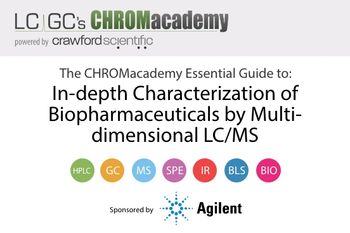
Fundamentals of GC–MS Ionisation Techniques
Understanding how an instrument works is great, but when do you have time to read a textbook, or go to a course? Let CHROMacademy help. Dip in and out of concise modules and take 5 minutes to learn a little about the fundamentals of your analytical technique. Why not delve into GC-MS ionisation techniques right now?
Understanding how an instrument works is great, but when do you have time to read a textbook, or go to a course? Let CHROMacademy help. Dip in and out of concise modules and take 5 minutes to learn a little about the fundamentals of your analytical technique. Why not delve into GC-MS ionisation techniques right now?
Electron Impact (EI)
Electrons are emitted from a heated filament (usually made of tungsten or rhenium) and are accelerated across the source by using an appropriate potential (5 - 100 V) to achieve the required electron energy to ionise the molecule (Figure 1).
Figure 1: Electron impact ionisation process (See CHROMacademy.com for Flash video)
The analyte is introduced into the mass spectrometer ion source where it is impacted by the beam of ionising electrons leading to the formation of an analyte radical cation (Figure 2). The molecular ions produced can fragment by loss of a radical or of a molecule with all its electrons paired (Figure 3).
EI is a relatively harsh form of ionization and as a result the parent often fragments further producing a pattern of fragment ions which can aid structural elucidation, however, the disadvantage of this is the frequent absence of the parent ion.
CHROMacademy Lite Membership is FREE and it only takes two minutes to register.
With a Lite Membership you are given access to:
- This month's webcast & tutorial
- Selected eLearning modules
- Featured CHROMacademy Content
- The CHROMacademy forum
Newsletter
Join the global community of analytical scientists who trust LCGC for insights on the latest techniques, trends, and expert solutions in chromatography.



